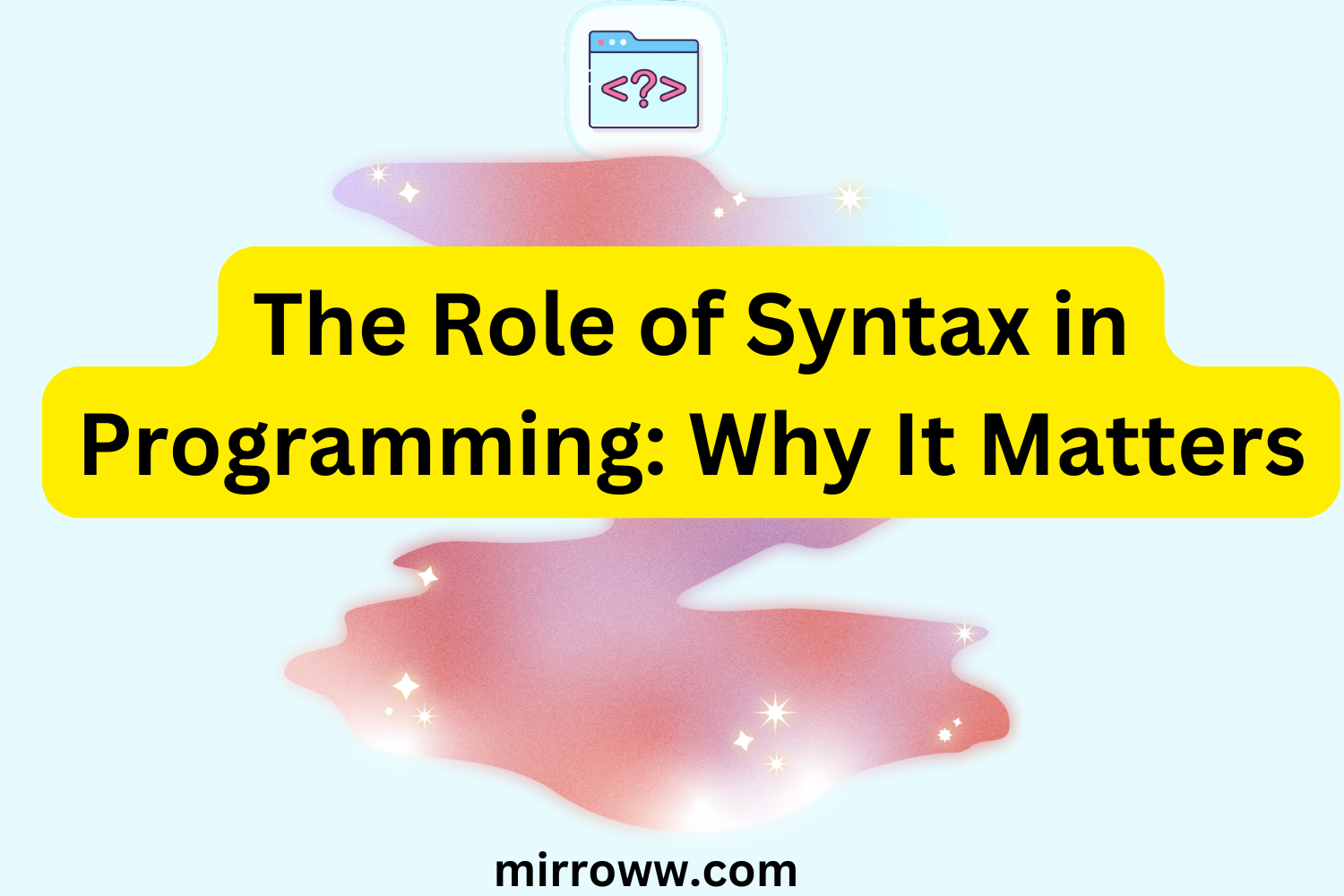Imagine trying to read a book where the words are jumbled and the punctuation is missing. Frustrating, isn’t it? Now, take that frustration and multiply it by ten—welcome to the world of programming without proper syntax. Syntax is the backbone of any programming language, the invisible force that keeps your code functioning and your sanity intact. Let’s dive into why getting syntax right is more than just a checkbox for perfectionists; it’s the foundation of successful programming.

What is Syntax in Programming?
At its core, syntax is the set of rules that define the structure of a programming language. Think of it as grammar for code. Just like in human languages, where misplaced commas can lead to awkward misunderstandings (“Let’s eat, Grandma” versus “Let’s eat Grandma”), syntax errors in programming can derail your code and trigger a cascade of bugs.
Each programming language—whether it’s Python, Java, or C++—has its own syntax rules. These rules determine how commands, symbols, and keywords are used to create functional programs. While the specifics vary, the importance of adhering to them does not.
Why Syntax Matters
1. It Prevents Errors
Following the correct syntax isn’t just about pleasing your compiler or interpreter. Incorrect syntax can result in errors that range from mildly annoying to utterly catastrophic. When you stick to the rules, you reduce the likelihood of spending hours debugging and questioning your life choices.
2. It Makes Your Code Readable
Ever had to decipher someone else’s code? Without consistent syntax, it’s like trying to read hieroglyphics without a Rosetta Stone. Proper syntax ensures that your code is readable and maintainable, not just for you but for others who might need to work on it. Collaboration thrives on clarity.
3. It Enhances Debugging Efficiency
Let’s be real: bugs are inevitable. But fixing them becomes a Herculean task if your code’s syntax is all over the place. Adhering to syntax rules ensures that error messages from compilers or interpreters are accurate, making the debugging process less of a nightmare.
4. It Sets the Stage for Scalability
Writing code with proper syntax is like laying a strong foundation for a building. Whether you’re creating a simple app or a sprawling enterprise system, following syntax rules makes your code easier to scale and adapt as requirements evolve.
Common Syntax Pitfalls and How to Avoid Them
Misplaced Punctuation
Missing a semicolon in Java or adding one where it doesn’t belong in Python can lead to syntax errors. Double-check punctuation to avoid unnecessary headaches.
Incorrect Indentation
Some languages, like Python, rely heavily on indentation to define blocks of code. Ignoring these rules can lead to errors or unexpected behavior.
Mismatched Brackets and Parentheses
Opening a bracket or parenthesis and forgetting to close it is a rookie mistake that even seasoned developers make. Use a code editor with auto-completion to avoid this.
Improper Use of Keywords
Keywords are reserved words in a programming language. Using them incorrectly or as variable names can cause conflicts.
Also read:How Syntax Errors Vary Across Programming Languages
Tips for Mastering Syntax
- Practice, Practice, Practice Repetition is key. The more you code, the more intuitive syntax becomes.
- Leverage Online Resources Tutorials, forums, and documentation are your best friends. Stack Overflow, for instance, is a treasure trove of syntax solutions.
- Use a Quality Code Editor Modern code editors like Visual Studio Code or PyCharm come equipped with syntax highlighting and error-checking features that can save you a ton of time.
- Collaborate and Peer Review Sharing your code with others and reviewing theirs can help you spot syntax errors and learn new best practices.
Syntax as a Gateway to Creativity
Here’s the paradox: while syntax is rigid, it’s also a gateway to creative problem-solving. Think of it as the scaffolding that supports your ideas. Once you master the rules, you can bend and twist them—within the bounds of the language—to create elegant, efficient solutions.
A Real-World Example
Consider this: a developer misses a simple semicolon in their code. The program compiles, but it runs incorrectly, leading to a major financial miscalculation in an e-commerce system. The result? Thousands of dollars in losses. This isn’t just a hypothetical scenario; it’s a reminder that small syntax errors can have big consequences.
Conclusion: Syntax is Non-Negotiable
The importance of syntax in programming cannot be overstated. It’s the glue that holds your code together, the rules that ensure your logic sees the light of day. So, the next time you’re tempted to ignore that nagging error message, remember: syntax isn’t just a set of rules; it’s the language of innovation.
Ready to level up your coding skills? Start by mastering syntax, and the rest will follow. Share your thoughts or your favorite syntax-saving tip in the comments below—we’d love to hear from you!
